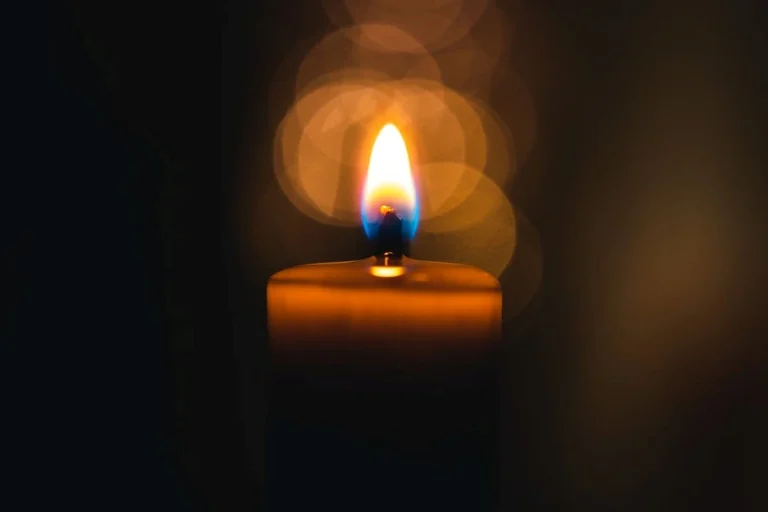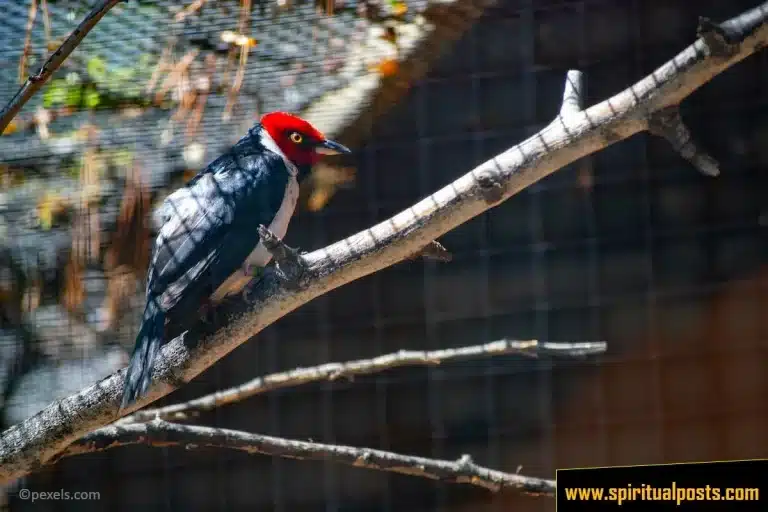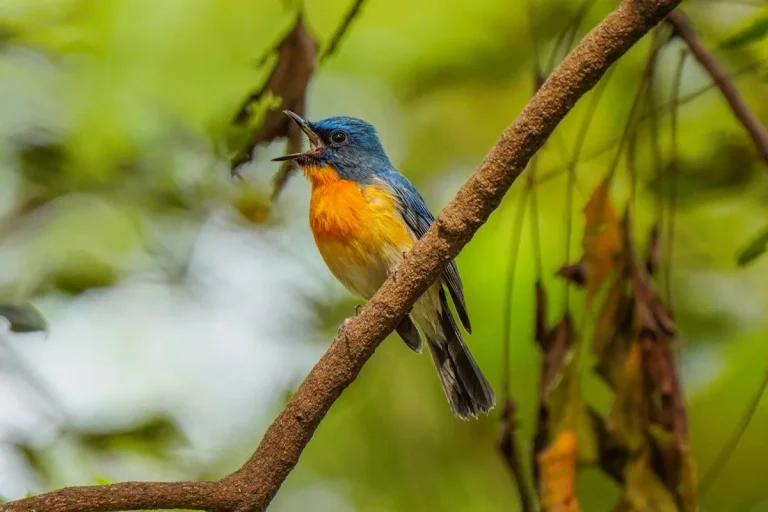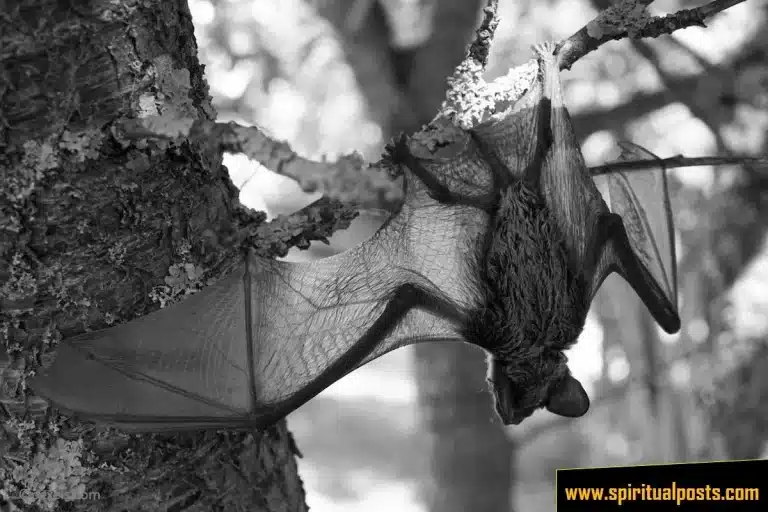Crane Spiritual Meanings and Symbolism

The crane is a majestic bird known for its graceful movements and striking appearance. Found on almost every continent, these tall, slender birds belong to the Gruidae family and thrive in wetlands, grasslands, and marshes.
One of the most fascinating things about cranes is their courtship dances, which look like elegant performances. They stretch their wings, leap, and bow in a way that captivates anyone watching.
In flight, cranes are easy to spot with their long necks, broad wings, and loud, echoing calls. They soar high in the sky, often traveling long distances during migration.
Across cultures, cranes symbolize longevity, loyalty, and spiritual wisdom. Their presence in myths, art, and traditions shows how deeply they inspire people. Even today, their beauty and symbolism continue to leave a lasting impression.

Key Takeaways
- Cranes are revered as symbols of longevity, immortality, and spiritual enlightenment in many ancient traditions, particularly in East Asian cultures.
- The crane’s graceful movements and serene presence are seen to embody wisdom, harmony, and the pursuit of higher consciousness.
- Cranes’ lifelong devotion to their mates and families symbolize the spiritual values of fidelity, partnership, and unity.
- The crane’s migratory nature and ability to traverse different realms reflect the concept of spiritual transformation and renewal.
What Does It Mean When You See a Crane?
Spotting a crane can carry deep spiritual meaning, often linked to patience, grace, and inner peace. It might be a reminder to slow down and reflect on your path in life.
The crane moves effortlessly between land, water, and air, symbolizing balance and adaptability. Its long neck represents clear vision, helping you see beyond everyday challenges.
When cranes fly in V-formations, they show the power of teamwork and unity. This reminds us that we’re all connected, working together toward common goals.
Some believe cranes bring messages from the spiritual world, guiding us toward growth. Their presence can inspire calmness, focus, and a deeper connection to life’s journey.
Crane Symbolism
Cranes are powerful symbols of wisdom, transformation, and good fortune. Many cultures see them as messengers between the physical and spiritual worlds.
Their ability to stand on one leg for hours represents focus and balance. This teaches us the importance of staying steady, even in difficult times.
The yearly migration of cranes mirrors the cycles of life—leaving, returning, and renewing. It’s a reminder that change is natural and growth comes with time.
In some traditions, cranes bring luck and prosperity. Their elegance also makes them symbols of beauty and refinement, inspiring art and storytelling for centuries.
7 Spiritual Meanings of Crane
1. Longevity and Immortality
Cranes are often seen as symbols of long life and immortality, especially in cultures like China and Japan. These birds live for many years, and that long lifespan has made people think of them as wise and strong.
In Chinese traditions, cranes are linked to long-lasting health and peaceful aging. Some people even believe cranes can live for a hundred years. Their calm and slow movements make them look like old, wise beings full of life experience.
Japanese myths go even further. They say a crane can live for a thousand years, which makes it a powerful symbol of eternal life. That’s why paper cranes in origami are considered lucky and meaningful, especially when given as a gift.
Cranes fly high and move smoothly, without much effort. This soaring flight is seen as a sign of reaching a higher place—not just in the sky, but in the spiritual world, too.
Their quiet, graceful way of living reminds us to live with calmness, patience, and awareness of our deeper spiritual selves. Cranes don’t rush, and that teaches us the value of slowing down and appreciating life.
2. Wisdom and Transformation
The crane is also a sign of spiritual wisdom and personal growth. It moves with patience and focus, which makes people think of calm minds and peaceful hearts.
Its long neck isn’t just for reaching food. Spiritually, it stands for the ability to see beyond the obvious and notice what others might miss. That kind of awareness is often tied to wisdom.
When cranes move or fly, they stay balanced and centered. This reminds us of how we should stay steady and calm, even when things around us are changing.
Their flight isn’t about speed—it’s about rising above limits. Spiritually, that shows how we can rise above our struggles or worries and reach a more peaceful state of mind.
Because cranes migrate from one place to another, they also represent the journey of transformation. Like these birds, we move through different seasons in our lives, growing and learning with each new step.
3. Elegance and Grace
One of the first things people notice about cranes is how elegant and graceful they are. They move like dancers, with every step and turn looking smooth and peaceful.
Their long legs and necks give them a unique beauty, but it’s not just about how they look. Their movements reflect a deeper kind of inner calm and self-control.
Many artists, poets, and spiritual teachers have been inspired by cranes for this reason. To them, the crane shows how being still and mindful brings both peace and strength.
In many cultures, cranes are seen as noble animals. They stand tall and move slowly, which makes them feel like creatures full of dignity and wisdom.
Watching a crane can remind us to slow down, find balance, and treat life with more care and thoughtfulness. Their elegance encourages us to develop our own sense of calm and beauty within.
4. Spiritual Renewal
Besides being beautiful, cranes carry deep messages of renewal and starting fresh. Their quiet nature and gentle energy can make us feel like we’re being guided into a new chapter of life.
The crane goes through different phases in its life, like all animals do. Spiritually, this reflects how we also go through cycles—times of growth, loss, and rebirth.
Letting go of old habits, negative thoughts, or beliefs that don’t help us anymore is part of this spiritual renewal. Like a crane shedding old feathers, we can release what we no longer need.
This fresh start can include things like trying out new spiritual practices, learning to be more aware of our thoughts, or spending quiet time reflecting on what matters most.
The crane encourages us to pause and make space for healing. When we feel stuck, its energy reminds us that growth is always possible, even after hard times.
5. Fidelity and Partnership
Cranes are known for their lifelong loyalty to their mates. They often stay with one partner for many years, sharing the work of raising their young and protecting their home.
This kind of deep connection makes cranes a strong symbol of trust, commitment, and teamwork in relationships. They show us how valuable it is to build something together and care for one another equally.
Cranes also perform special dances during courtship. These dances are graceful and full of meaning, reflecting how two individuals can grow closer through shared understanding and respect.
Their loud calls during these moments are a form of communication, which highlights how important it is to stay connected and honest in any partnership.
Cranes teach us that true love isn’t rushed or dramatic. It’s built over time, through loyalty, patience, and working side by side, especially when life gets challenging.
6. Connection to Nature
Cranes live closely with nature, especially in quiet places like wetlands and marshes. Their deep bond with the Earth makes them powerful symbols of harmony with the natural world.
When they glide through the sky or walk through water, it’s easy to feel their strong link to the cycles of life. They remind us to pay attention to the world around us.
Their movements and sounds are soft but full of meaning. The way they echo through the land is a spiritual reminder that everything in nature has a voice and rhythm.
Cranes follow ancient migration paths year after year. This represents life’s natural cycles—birth, growth, death, and renewal—and teaches us to flow with these changes instead of fighting them.
Since they choose quiet, untouched places to live, cranes also stand for respecting the Earth. They remind us that caring for nature is one of the most sacred things we can do.
7. Overcoming Obstacles
Cranes face tough challenges in their journeys, like harsh weather or long distances. But they keep going. This strong willpower makes them a symbol of resilience and persistence.
Even when things get rough, cranes adapt. They find different paths or change direction, showing us that being flexible can help us overcome the hard parts of life.
Instead of giving up, cranes move with grace through whatever comes their way. This teaches us to meet problems with strength and confidence.
Their journey is never perfect or straight. But that’s what makes it real. The crane’s story shows that every struggle can help shape us into stronger, wiser people.
Following the crane’s example means choosing to keep going—even when life gets messy. It’s about believing in your own power to grow and keep moving forward.
Crane Symbolism in Different Cultures and Contexts
Crane Symbolism in Native American Culture
In Native American culture, the crane is more than just a bird—it’s a spiritual figure. Many tribes look to the crane as a symbol of grace, wisdom, and balance with nature. Its tall, quiet presence reminds people to be calm and thoughtful.
For the Ojibwe, the crane has a healing role. It’s seen as a guide that helps people handle challenges using wisdom and patience. Its movements are slow and steady, showing strength without force.
The Hopi believe the crane brings messages from the sky gods. It reminds them that everything in life is connected and must stay in balance. The crane teaches harmony through its peaceful presence.
The Iroquois see the crane as a sacred being that carries prayers. It’s respected for acting as a bridge between humans and the spirit world. They believe it listens and delivers messages to higher powers.
In Plains tribes like the Lakota and Cheyenne, cranes are linked to good luck and wealth. They even use crane feathers in ceremonies to bring blessings and protection. Across many tribes, this bird is a symbol of deep spiritual power.
Crane Symbolism in Celtic Culture
The Celtic people also honored the crane. For them, this bird represents water, cycles of life, and deep spiritual connections. Its slow movements reflect the flow of rivers and the rhythm of nature.
In Celtic myths, cranes are messengers. They are thought to travel between Earth and the heavens, sharing wisdom from beyond. Their ability to fly high makes them a symbol of spiritual travel and insight.
Celtic art often features cranes next to spirals or triple symbols. These images show the crane’s role in linking the body, mind, and spirit. It’s not just about the bird—it’s about what the bird teaches.
To the Celts, cranes were guides and protectors. They believed seeing one could be a sign that you’re being watched over or led toward clarity. These ideas gave the crane a respected place in their beliefs.
This connection to nature and spirit made the crane a powerful totem. Whether in art, story, or prayer, its presence always pointed to mystery, depth, and sacred knowledge.
Crane Symbolism in Nordic Culture
In Nordic culture, the crane is tied to wisdom, age, and spiritual journeys. It isn’t only seen as a beautiful creature but also as a sign of deep understanding. People believed it carried hidden meanings from the gods.
Old Norse tales say the crane could move between this world and the next. Its flight was a sign of the soul traveling from life to death and maybe even back again. Seeing one meant change or transformation was near.
People listened closely to the crane’s cry. They believed it warned of important events or delivered divine messages. Its sound carried weight—it wasn’t just noise, but something sacred.
In funerals, crane feathers were sometimes used. This honored the dead and helped guide their souls to the afterlife. The crane became a symbol of peaceful passing and connection to ancestors.
The goddess Freyja, known for beauty and magic, was often linked to cranes. Myths describe her riding in a chariot pulled by these birds, showing the crane’s divine and royal qualities.
Crane Symbolism in African Culture
In Africa, different tribes gave the crane their own meanings. But across the continent, it’s seen as graceful, powerful, and spiritually aware. It often stands for communication with the spirit world.
The Maasai view the crane as a godly messenger. Its appearance means something big might happen, or spiritual advice is close. Its movements and calls bring attention to unseen forces at work.
In Yoruba tradition, the crane shows balance. It lives in both water and land, teaching that life is about keeping peace between two worlds. People respect its calm nature and sense of harmony.
The Akan see the crane as a symbol of watching and learning. Its sharp eyes and slow steps remind people to be alert and wise. It stands for patience, understanding, and smart choices.
In all these African cultures, the crane reminds people to stay in tune with life’s flow. It encourages both spiritual growth and balance in everyday life.
Crane Symbolism in Eastern Culture
In Eastern cultures like those in China, Japan, and Korea, the crane means long life, deep wisdom, and spiritual peace. People believe this bird can live for hundreds of years, giving it a mystical reputation.
Its slow and graceful flying is seen as a sign of inner calm and control. The crane doesn’t rush. Instead, it moves with purpose and care, teaching people to live with focus and grace.
In art and traditions, cranes are linked to enlightenment. Their ability to rise above the ground shows how people can lift themselves spiritually. They symbolize freedom from daily stress and deeper understanding.
Many festivals and religious rituals in these countries include crane images. You’ll see them in paintings, on robes, and carved into temples. Their presence is a symbol of honor and purity.
Across Eastern beliefs, the crane is a guide to higher living. It shows how patience, beauty, and balance lead to a wiser, more meaningful life.
Crane Symbolism in Hindu Culture
In Hinduism, cranes are respected for their calm, wisdom, and spiritual connection. People believe they carry messages from Brahma, the creator god, and are signs of good things to come.
Their stillness and steady movements reflect patience and strong focus. These traits are important in Hindu teachings about personal growth and mindfulness.
The crane often appears in stories with the swan, another holy bird. Together, they represent learning and freedom from the material world. They point to the value of education and the journey of the soul.
During certain Hindu ceremonies, cranes are drawn or carved into sacred items. Their image brings a sense of peace, long life, and purity to the rituals.
Because cranes live near water and walk on land, they are seen as a symbol of both worlds. This makes them perfect symbols for the human soul that travels between life and spirit.
Crane in Art and Literature
Artists and writers across the world have found deep meaning in cranes. These birds show up in paintings, poems, and stories as signs of beauty, wisdom, and transformation.
In Japan, cranes are shown in soft, peaceful woodblock prints. They’re often placed near water or in quiet landscapes, adding a feeling of calm and harmony.
Chinese poets use the crane as a symbol of long life and deep thought. Their graceful flight becomes a metaphor for reaching higher knowledge or letting go of worries.
In Native American stories, cranes represent change and healing. Artists and storytellers use them to explore how people grow through pain and reconnect with nature.
European writers like Shakespeare also mention cranes. In his plays, they stand for being alert and thoughtful, showing that the crane’s meaning crosses continents and time.
Crane in Mythology
The crane has a powerful place in many myths. It’s often shown as a messenger between worlds—bringing knowledge from the gods or helping souls travel to the afterlife.
In ancient Chinese myths, cranes live for hundreds of years. They carry wise beings on their backs, showing their role as protectors and teachers of spiritual truth.
Japanese legends say cranes bring luck and lasting love. The story of folding a thousand paper cranes speaks of hope, peace, and strong relationships that last.
Native American myths also praise the crane’s journey. Its flight and seasonal movement connect to the cycles of life, death, and rebirth.
Each of these stories gives the crane a role that goes beyond nature. It becomes a symbol of things we can’t always see but deeply feel—hope, guidance, and change.
Biblical Meanings of Crane
Cranes also appear in the Bible, where they’re linked to watchfulness, wisdom, and renewal. These birds are used as examples to teach life lessons.
In Job 38:36, the crane is mentioned as a bird that stays alert. It reminds people to stay thoughtful and ready for what life brings.
Jeremiah 8:7 talks about how cranes know when to migrate. This teaches people to be aware of life’s seasons and to act wisely when it’s time for change.
In Isaiah 38:14, the crane’s sad cry is compared to the prophet’s sorrow. This connects the bird to deep emotions and human struggle.
Zechariah 5:9 tells of cranes carrying away sin. This powerful image shows the crane as a helper in spiritual healing and growth.
Spiritual Meaning of Dreaming About a Crane
When a crane shows up in your dream, it often means change, growth, and deeper insight. It may be trying to get your attention about something spiritual.
The way a crane moves—from land to air to water—shows your ability to handle all parts of life. Dreaming of one might mean it’s time to look at your life from a new angle.
A crane’s long neck and sharp eyes speak to patience and focus. Your dream might be reminding you to stop, observe, and wait for the right time to act.
Since cranes connect to water, dreams about them can point to feelings or emotions. The bird may be telling you to clear out old emotions and make room for healing.
Think about how the crane appeared in your dream. Its actions and presence could guide you toward a better understanding of yourself and what you need to work on.
Crane as a Spirit Animal, Totem, or Power Animal
As a spirit animal, the crane brings you clarity, patience, and balance. When this bird appears in your life, it’s often a sign to slow down and pay attention.
The crane teaches you to watch and listen. It reminds you to make careful choices instead of rushing into things.
As a totem, the crane helps you find peace in hard times. It tells you to stay graceful and thoughtful, no matter what’s happening around you.
When the crane shows up as a power animal, it may be guiding you to trust your inner wisdom. It helps you tune into your spiritual side and trust the path you’re on.
Having the crane as a guide can be a powerful gift. It encourages you to live with care, strength, and a strong connection to both Earth and spirit.
Final Thoughts
The crane is more than a bird—it’s a spiritual symbol found across many cultures. People have looked to it for messages about life, change, and sacred wisdom.
Its calm nature and slow movements show the value of patience. Its long life connects it to wisdom and spiritual truth.
From ancient stories to modern dreams, the crane keeps showing up as a guide. Whether it appears in art, myth, or your own thoughts, it has something important to say.
By learning from the crane, you can move through life with more peace, focus, and a deeper connection to something greater.
You Might Also Like
1) 10 Spiritual Meanings of Ostrich and Its Symbolism
2) The Spiritual Meanings of Albatross and Its Symbolism
3) Woodpecker Spiritual Meanings and Symbolism
4) Goldfinch Spiritual Meanings and Symbolism
5) Vulture Spiritual Meanings and Symbolism





